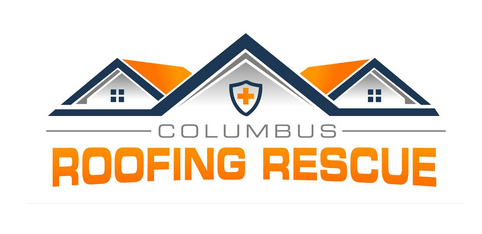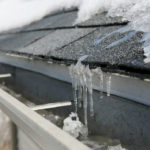
5 Steps to Get a New Roof Covered By Insurance
If you own your own home, you know how crucial it is to have a good homeowner’s insurance policy. It helps protect your property from unforeseen damage and gives you peace of mind in difficult times. However, what happens when you need a new roof? Will your insurance cover the cost? Unfortunately, getting a new roof covered by your insurance can be daunting. But don’t worry. We’ve got you covered. This article will explore five steps to help you maximize your homeowner’s insurance and get a new roof covered.
Understanding Your Insurance Policy
The first step towards getting your new roof covered is understanding your homeowner’s insurance policy. You must know precisely what your policy covers and what it doesn’t. Standard homeowner’s insurance policies typically cover damage caused by natural disasters, fire, and theft. However, the coverage for a new roof will vary depending on how the damage happened.
If your home’s roof has been damaged due to a sudden and unexpected event like a storm, your policy will cover the cost of repairs or replacement. However, your policy may not cover the cost if the roof damage is normal wear and tear or lack of maintenance.
Reading your policy carefully and understanding the terms and conditions is very important. If you have doubts or questions, don’t hesitate to contact your insurance agent for clarification. Knowing your policy’s coverage limits and deductibles can help you prepare financially for any unexpected expenses.
The Importance of Roof Inspection

Before filing a claim, it’s crucial to get your roof inspected by a professional. A roof inspection will help you identify roof damage and potential issues that may not be visible to the naked eye. A professional roofer will also give you an estimate of the repair or replacement costs.
An inspection report can be valuable when filing a claim with your insurance company. It provides evidence of the damage and can help your insurance adjuster determine the extent of the repairs needed. Additionally, a roof inspection report will help you with a better settlement with your insurance company if your roof is relatively new and well-maintained.
Steps to Take Before Filing a Claim
Before filing a claim, there are several steps you can follow to help your overall chances of getting your new roof covered. First, document the damage by taking photos or videos of the affected area. Make sure to capture images of your home’s interior and exterior. This documentation can help support your claim and provide evidence of the damage incurred.
Second, contact your insurance company and inform them of the damage. Your insurance company will probably send an adjuster to assess the roof damage and submit an estimate for repairs or replacement.
Be sure to ask for the adjuster’s contact information and keep it handy.
Finally, start gathering all relevant documentation related to your claim. This may include your homeowner’s insurance policy, inspection reports, repair estimates, receipts, and other relevant information. Having all this valuable information in one place can help streamline the claims process and ensure you have all the necessary documents when filing your claim.
Tips for Filing a Successful Claim
When filing your roof claim, a few helpful tips can help increase your chances of success. First, be prepared to negotiate. Most insurance companies may try to deny or minimize your claim, so it’s essential to be persistent and advocate for yourself.
Second, be honest and transparent with your insurance company. Don’t exaggerate the extent of the damage, but don’t downplay it, either. Provide accurate and truthful information to support your claim.
Third, keep detailed records of all communication with your insurance company. This includes emails, phone calls, and in-person meetings. Keep a log of each communication’s date, time, and content. This documentation can be helpful for any disputes or discrepancies later on.
Finally, be patient. The claims process can be stressful and complicated, so it’s essential to be patient and persistent. Follow up regularly with your insurance company and stay on top of the requirements.
Working with Your Insurance Company
Once you’ve filed your claim, you must work closely with your insurance company to ensure a successful claims process. Be responsive and cooperative with your insurance adjuster. Please provide any additional documentation or information they may request promptly.
Additionally, keep receipts for all expenses related to the damage. This includes any temporary repairs or living expenses you may incur if you need to relocate while repairs are done. Keep receipts and invoices for all expenses and submit them to your insurance company for reimbursement.
Finding the Right Contractor

Finding the right roofing contractor to replace or repair your roof is crucial. Look for licensed and insured roofing contractors with experience in roofing repairs and replacements. Take your time hiring the first contractor you come across. Take the time to properly research and compare several contractors before deciding.
Check their reviews from previous customers. Ask for an itemized detailed estimate that includes all the costs of labor, materials, and other expenses. Don’t be shy or worried to ask questions or negotiate to get the best possible deal.
Maximizing Your Coverage for a New Roof
Maximizing your coverage for a new roof involves protecting your property and preventing future damage. This includes regular maintenance and upkeep of your roof, such as cleaning gutters and removing debris.
Additionally, consider upgrading your roof to more durable materials that can withstand harsh weather conditions. This will also help reduce any chances of damage and increase your home’s value.
Common Mistakes to Avoid
Homeowners make several common mistakes when filing a claim for a new roof. One of the most significant mistakes is waiting too long to file a claim. If you wait a long period, your insurance company could deny your claim, citing a lack of evidence or proof of timely reporting.
Another mistake is not documenting the damage adequately. Take videos and photos of the affected area and keep all receipts and estimates for repairs or replacement.
Finally, don’t assume that your insurance company will automatically cover the cost of a new roof. It’s very important to read your policy carefully and understand the coverage limits and deductibles.
Conclusion
Getting a new roof covered by your homeowner’s insurance may seem daunting. Still, with the proper knowledge and approach, you can maximize your coverage and get the necessary repairs or replacements. Remember to understand your policy, get your roof inspected, document the damage, and work closely with your insurance company and contractor. Taking these necessary steps can protect your property and ensure your peace of mind.



